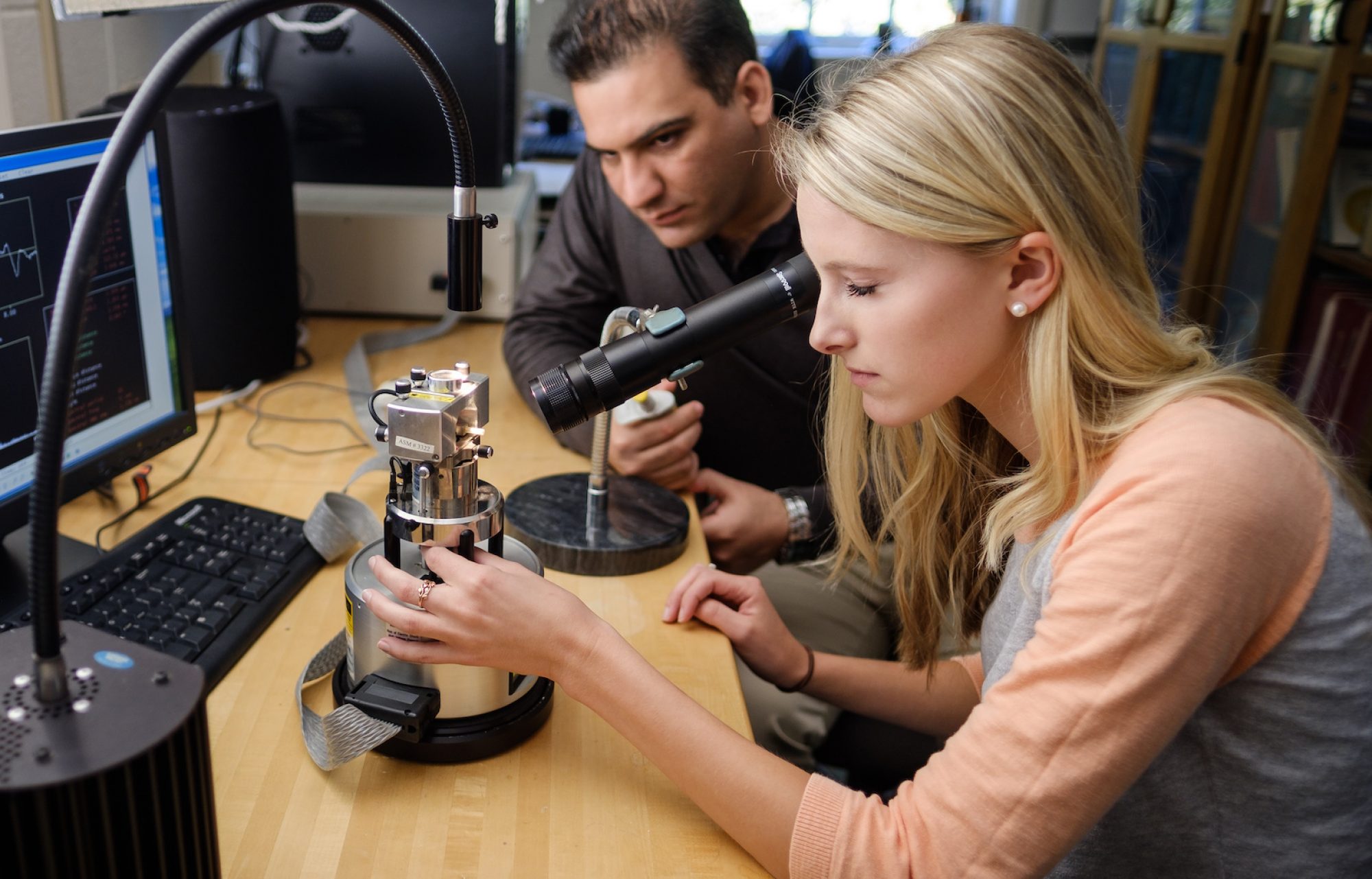Professor Olivier Delaire
Department of Mechanical Engineering and Materials Science
Duke University
George P. Williams, Jr. Lecture Hall, (Olin 101)
Wednesday, Oct. 30, 2019, at 3:00 PM
There will be a reception in the Olin Lounge at approximately 4 PM following the colloquium. All interested persons are cordially invited to attend.
ABSTRACT
A detailed view of atomic motions in materials is needed to refine microscopic theories of transport and thermodynamics, and to design next-generation energy materials. In particular, the behavior of atomic vibrations (phonons) is key to rationalize numerous functional properties, ranging from ferroelectrics for sonar, to superionics for safer solid batteries, to thermoelectrics for waste-heat harvesting, or metal-insulator transitions for ultrafast transistors. Near phase transitions associated with phonon instabilities, one needs to properly account for the effect of strong anharmonicity, which disrupts the quasiharmonic phonon gas model through large phonon-phonon coupling terms. Large phonon amplitudes can also amplify the electron-phonon interaction and lead to renormalization of a material’s electronic structure. These interactions, while often neglected in textbooks and traditional studies, could open the door to further tuning of materials properties for improved functionality.
This presentation will highlight results from our investigations of atomic dynamics in several classes of materials impacted by lattice instabilities, such as ferroelectrics and multiferroics (EuTiO3, YMnO3) [1], thermoelectrics (PbTe, SnSe) [2-4], superionic conductors [5], and VO2 across its metal insulator transition [6,7]. Our group takes advantage of advances in modern neutron and x-ray instrumentation, which have revolutionized our ability to probe atomic dynamics. By mapping phonon spectral functions throughout reciprocal space, phonon anharmonicity and couplings to other degrees of freedom can now be revealed in great detail. Such mode-resolved investigations bring direct insights into phonon scattering mechanisms, including anharmonicity, electron-phonon coupling, spin-phonon coupling, or scattering by defects and nanostructures. Increasingly, first-principles simulations of atomic dynamics enable the quantitative rationalization of these effects, for example with ab-initio molecular dynamics simulations or anharmonic renormalization techniques at finite-temperature, and our group systematically integrates such modeling with our scattering experiments. The presentation will conclude with some possible scientific opportunities.
[1] D. Bansal, J. L. Niedziela, R. Sinclair, V. O. Garlea, D. L. Abernathy, S. Chi, Y. Ren, H. Zhou, and O. Delaire, “Momentum-resolved observations of the phonon instability driving geometric improper ferroelectricity in yttrium manganite”, Nature Communications 9, 15 (2018).
[2] O. Delaire, J. Ma, K. Marty, A. F. May, M. A. McGuire, M.-H. Du, D. J. Singh, A. Podlesnyak, G. Ehlers, M. Lumsden, B. C. Sales, “Giant Anharmonic Phonon Scattering in PbTe”, Nature Materials 10, 614 (2011).
[3] C.W. Li, O. Hellman, J. Ma, A.F. May, H.B. Cao, X. Chen, A.D. Christianson, G. Ehlers, D.J. Singh, B.C. Sales, and O. Delaire, “Phonon self-energy and origin of anomalous neutron scattering spectra in SnTe and PbTe thermoelectrics”, Physical Review Letters 112, 175501 (2014).
[4] C.W. Li,* J. Hong,* A.F. May, D. Bansal, S. Chi, T. Hong, G. Ehlers and O. Delaire, “Orbitally-driven giant phonon anharmonicity in SnSe”, Nature Physics 11, 1063 (2015).
[5] J. L. Niedziela, D. Bansal, A. F. May, J. Ding, T. Lanigan-Atkins, G. Ehlers, D. L. Abernathy, A. Said & O. Delaire, “Selective Breakdown of Phonon Quasiparticles across Superionic Transition in CuCrSe2”, Nature Physics, 15, 73–78 (2019)
[6] J. D. Budai*, J. Hong*, M. E. Manley, E. D. Specht, C. W. Li, J. Z. Tischler, D. L. Abernathy, A. H. Said, B. M. Leu, L. A. Boatner, R. J. McQueeney, and O. Delaire, “Metallization of vanadium dioxide driven by large phonon entropy”, Nature 515, 535–539 (2014).
[7] S. Lee, et al., “Anomalously low electronic thermal conductivity in metallic vanadium dioxide” Science, 355 (6323): 371 (2017).
Funding from US DOE, Office of Basic Energy Sciences, Materials Science and Engineering Division.
Link to Delaire Research Group Web Page
Printable Version
